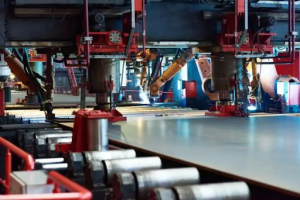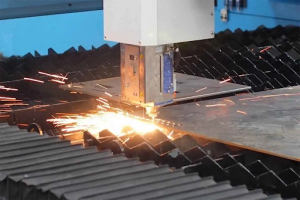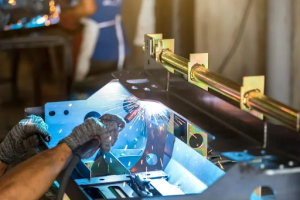How to Reduce Sheet Metal Fabrication Expenses Efficiently
Sheet metal fabrication is widely used across industries such as automotive, aerospace, construction, electronics, and industrial machinery. Its versatility makes it ideal for producing everything from simple brackets to complex enclosures and precision components. However, with rising material prices, increased labour costs, and higher energy consumption, many businesses are seeking ways to reduce sheet metal manufacturing expenses without compromising quality.
Cost savings don’t come from cutting corners; they come from optimising design, choosing better materials, planning workflow efficiently, and collaborating with experienced professionals. This guide outlines the key strategies employed across the industry to minimise sheet metal fabrication costs, providing detailed explanations and actionable insights.
18 Ways to Reduce Sheet Metal Manufacturing Expenses
Choose the Right Material
Material costs often account for the largest portion of sheet metal expenses. Selecting the most suitable material rather than the most expensive or strongest can significantly reduce costs without compromising performance.
Many engineers unintentionally choose materials that exceed the strength, corrosion resistance, or heat tolerance actually needed for the application. This leads to overspending on premium metals or thicker gauges.
How to reduce material expenses
- Select the most cost-effective material that meets requirements. Instead of defaulting to stainless steel, consider mild steel or coated steel for non-corrosive environments.
- Avoid unnecessarily thick gauges. Thicker materials require more force to bend, wear out tooling faster, and increase overall weight.
- Use standard sheet sizes and grades. Custom sizes often lead to increased waste and higher supplier pricing.
- Compare alternative materials. Aluminium may be lighter and easier to machine for some projects, saving cost on both material and cutting time.
Why this reduces cost: The right material minimises waste, lowers machine time, and helps maintain consistent quality. Even a small change in thickness or grade can save thousands over large production runs.

Simplify and Optimise the Design
Design complexity is one of the biggest drivers of fabrication cost. Even small details such as extra cutouts, tight corners, or complex bends can drastically increase setup time, tooling requirements, and machining hours.
A simplified design not only costs less to produce but also results in stronger, more reliable parts.
How to simplify design
- Reduce the number of bends. Each bend adds time and may require different die tools.
- Use consistent bend radii. Standard radii avoid expensive tooling changes and speed up forming.
- Remove overly intricate shapes. Curves, deep forms, and odd shapes often require slower cutting speeds.
- Avoid excessive cutouts unless necessary. Internal cutouts increase laser time and weaken the part.
- Use flat, manufacturable shapes whenever possible. Clean geometry is easier and faster to produce.
Why this reduces cost: Simple designs reduce machine setups, cutting time, rework, and scrap all major factors in overall project cost.
For a deeper understanding of common fabrication methods that influence design decisions and cost, read our full Metal Fabrication Guide.
Use Appropriate Tolerances
Tight tolerances are often unnecessary and add significant cost due to slower machining speeds, more precise equipment, and extended inspection time. Many components function perfectly well with general tolerances.
Cost-effective tolerance practices
- Apply strict tolerances only where essential. For example, mating surfaces or areas requiring alignment.
- Use general tolerances for non-critical features. This speeds up cutting and forming.
- Consult with your fabricator. They can identify which tolerances increase cost the most.
Why this reduces cost: Relaxing tolerances reduces tool wear, decreases cutting time, and eliminates the need for additional inspections, leading to lower per-part cost.

Optimise Nesting and Material Layout
Nesting determines how parts are arranged on a sheet before cutting. Poor nesting leads to high scrap rates and unnecessary material purchases.
Advanced nesting strategies allow manufacturers to get more usable parts from each sheet, lowering costs significantly.
Nesting optimisation strategies
- Use powerful nesting software to automatically place parts efficiently.
- Group parts using the same material and thickness. This reduces leftover scrap.
- Minimize large internal cutouts. These increase waste and slow the cutting process.
- Use shared-line cutting to save material when possible.
Why this reduces cost: Better nesting increases sheet utilisation, reducing the number of sheets needed and directly lowering material spend.
Minimise Unnecessary Features
Extra features such as holes, louvres, etchings, and slots increase production time and tooling cost.
Feature reduction guidelines
- Use standard hole diameters. Non-standard holes require special tooling.
- Avoid tiny cutouts. Small features need micro tools and slower cutting speeds.
Remove decorative or non-functional elements. They add cost without improving performance.
Why this reduces cost: Unnecessary features mean additional machine passes, tools, and inspection. Removing them speeds up the entire production process.

Reduce Secondary Operations
Secondary operations such as welding, deburring, finishing, grinding, and coating often cost more than the fabrication itself. By designing smarter, you can eliminate many unnecessary finishing steps.
Ways to reduce secondary operations
- Choose materials that don’t require finishing. For example, brushed stainless steel requires no painting.
- Reduce welds by replacing joints with bends. This reduces labor.
- Use laser cutting to eliminate burrs. This removes the need for manual grinding.
- Avoid cosmetic processes unless required. Powder coating or polishing adds cost.
Why this reduces cost: Secondary operations require skilled labour, extra machines, and longer production time, all of which are expensive.
Reduce Part Count and Consolidate Components
The fewer parts your design has, the cheaper it is to manufacture and assemble. Many multi-part assemblies can be redesigned as a single piece.
How to consolidate parts
- Replace assemblies with folded parts. One bent sheet can often replace multiple welded components.
- Integrate brackets and mounting points into the main piece.
- Eliminate unnecessary fasteners or joints.
Why this reduces cost: Fewer parts mean less welding, fewer fasteners, easier assembly, and reduced quality checks.
Take Advantage of Volume Production Savings
When producing large batches, the cost per part decreases significantly because the machine setup time is shared across more units.
Benefits of bulk orders
- Lower per-unit pricing
- Better material utilisation
- Faster turnaround times
- Higher consistency
Why this reduces cost: Setup time and tool changes become a smaller percentage of the total production time when batches are larger.

Optimise Hardware and Assembly
Hardware components such as screws, nuts, and inserts seem inexpensive individually, but over thousands of parts, they add up quickly.
Cost-saving hardware practices
- Use standard hardware sizes. Custom parts are costly and often require special installation tools.
- Reduce the number of fasteners. Design elements should support structural integrity.
- Use self-clinching nuts or studs to speed up assembly.
Why this reduces cost: Simplifying hardware lowers material cost, assembly time, and the potential for errors.
Kirmell uses advanced nesting software to help customers reduce material waste and achieve maximum sheet utilisation, leading to lower overall production costs.
Collaborate With Experienced Professionals
Early collaboration with a skilled sheet metal fabricator can prevent costly design mistakes and optimise the entire process.
Why collaboration matters
- Fabricators suggest material alternatives.
- They recommend simplifying features or geometry.
- They advise on proper tolerances.
- They know the fastest cutting and forming methods.
Why this reduces cost: Expert advice improves manufacturability, reduces scrap, and minimises redesigns.
Kirmell regularly helps businesses optimise their sheet metal designs, choose the right materials, and reduce overall production costs through efficient fabrication processes.
Streamline the Production Workflow
An efficient production workflow ensures faster fabrication, fewer delays, and reduced labour hours.
Ways to improve workflow
- Group similar parts to reduce machine setup.
- Standardise tools and work processes.
- Organise the shop floor to shorten the movement distance.
- Use fixtures to speed up repetitive tasks.
Why this reduces cost: A lean, well-planned workflow shortens production time and increases output per hour.
Break Down the Production Cycle
Understanding each step in the sheet metal fabrication process helps you pinpoint inefficiencies.
Typical stages include
- Cutting
- Bending
- Welding
- Finishing
- Assembly
- Inspection
Why this reduces cost: When each stage is evaluated separately, it becomes clear where improvements or redesigns can save money and time.
Calculate the Cost of Raw Materials Accurately
Many companies underestimate the total material cost because they overlook scrap, delivery fees, cutting allowances, and sheet availability.
How to get accurate material cost
- Include scrap percentages in cost calculations.
- Factor delivery and handling fees.
- Compare suppliers and order standard sheet sizes.
- Consider total cost per usable square meter, not just per-sheet price.
Why this reduces cost: Accurate costing helps you select better materials, reduce waste, and plan more efficiently.
Evaluate Machining Costs
Machining costs include labour, tool wear, programming time, and machine run-time.
Ways to reduce machining cost
- Simplify geometry to reduce tool changes.
- Choose cutting methods that match the material and volume.
- Avoid features that slow cutting speed or require special tooling.
Why this reduces cost: Well-planned machining reduces processing time and tool expenses.
To understand how machining, fabrication, and presswork combine to create efficient production workflows, explore the guide on How Metal Presswork, Fabrication & Machining Work Together.

Limit Custom Specifications
Custom specifications usually increase manufacturing time and cost.
How to avoid unnecessary custom specs
- Stick to common sheet thicknesses and standard coatings.
- Avoid rare alloys and unique finishes unless needed.
- Use common fasteners and finishes where possible.
Why this reduces cost: Standard specs reduce lead time and tooling requirements.
Use Off-the-Shelf Components
Off-the-shelf components are cheaper, easier to source, and quicker to assemble than custom-made parts.
Benefits of standard components
- Lower unit cost
- Shorter lead times
- Easier replacement and servicing
Why this reduces cost: Readily available parts simplify procurement and reduce delays.
Standardise Hole Sizes and Corner Radii
Standardisation minimises tool changes and speeds up production.
Standardization tips
- Use hole sizes that match standard punch and drill tools.
- Keep radii consistent across parts.
- Avoid non-standard diameters unless functionally required.
Why this reduces cost: Standardisation simplifies machining and reduces lead time.
Select the Most Cost-Effective Cutting Technology
Cutting method choice affects both quality and cost.
Cutting method considerations
- Laser cutting: Fast and precise; ideal for many sheet metal jobs.
- Punching: Cost-effective for high-volume repetitive shapes.
- Waterjet: Accurate and good for heat-sensitive materials, but generally more expensive.
Why this reduces cost: Matching the process to your needs maximises efficiency and savings.
You can learn more about modern cutting and forming techniques in the Complete Guide to Metalworking Methods.
Why Partner With Kirmell for Cost-Effective Sheet Metal Fabrication
Choosing the right fabrication partner plays a major role in controlling sheet metal manufacturing expenses. At Kirmell, we help businesses reduce costs through smarter design, efficient material selection, and streamlined production methods. Our team ensures every part is optimised for manufacturability, reducing waste, machining time, and unnecessary complexity.
Kirmell combines advanced machinery with efficient workflows to deliver precise and cost-effective sheet metal components. From laser cutting to bending and assembly, we provide a complete range of services designed to shorten lead times and lower overall project costs. By partnering with us, businesses gain a reliable team focused on delivering value and long-term savings.
Conclusion
Reducing sheet metal manufacturing expenses requires thoughtful planning, smart design choices, efficient workflow, and material optimisation. By applying these methods from choosing the right material to optimizing tolerances and workflow, businesses can dramatically reduce costs without sacrificing quality.


